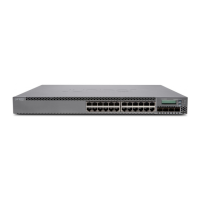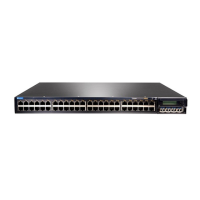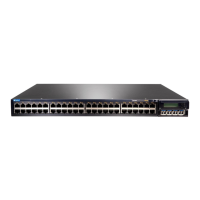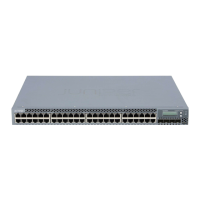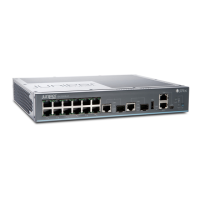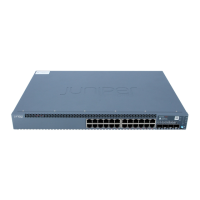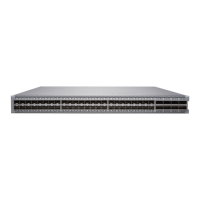Using Layer 2 Unicast Transmission for DHCP Packets
You can configure the DHCP relay agent to override the setting of the broadcast bit in
DHCP request packets. DHCP relay agent then instead uses the Layer 2 unicast
transmission method to send DHCP Offer reply packets and DHCP ACK reply packets
from the DHCP server to DHCP clients during the discovery process.
To override the default setting of the broadcast bit in DHCP request packets:
1. Specify that you want to configure override options.
[edit forwarding-options dhcp-relay]
user@host# edit overrides
2. Specify that the DHCP relay agent uses the Layer 2 unicast transmission method.
[edit forwarding-options dhcp-relay overrides]
user@host# set layer2-unicast-replies
Related
Documentation
Extended DHCP Relay Agent Overview on page 46•
• Overriding the Default DHCP Relay Configuration Settings on page 68
Sending Release Messages When Clients Are Deleted
By default, when DHCP relay and relay proxy delete a client, they do not send a release
message to the DHCP server. You can override the default behavior and configure DHCP
relay and relay proxy to send a release message whenever they delete a client. The release
message sent by DHCP relay and relay proxy includes option 82 information.
NOTE: You must include the send-release-on-delete statement to configure
DHCP relay and relay proxy to send the release message when the
client-discover-match statement is included.
You can use the [edit forwarding-options dhcp-relay dhcpv6] hierarchy level to override
the default behavior for DHCPv6 relay agent.
To send a release message:
1. Specify that you want to configure override options.
•
For DHCP relay agent:
[edit forwarding-options dhcp-relay]
user@host# edit overrides
•
For DHCPv6 relay agent:
[edit forwarding-options dhcp-relay dhcpv6]
user@host# edit overrides
Copyright © 2017, Juniper Networks, Inc.58
DHCP and Other System Services Feature Guide for EX2300, EX3400, and EX4300 Switches

